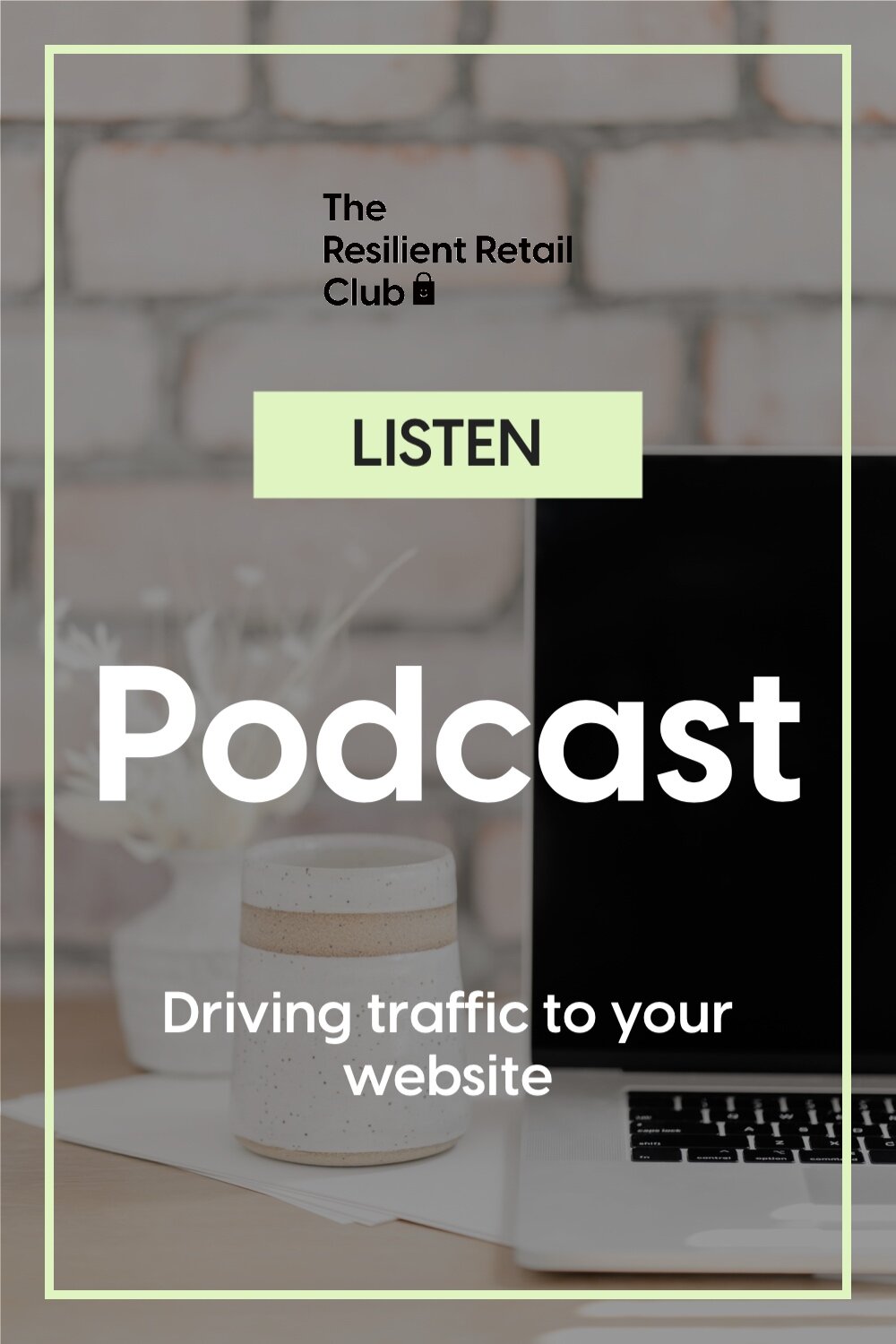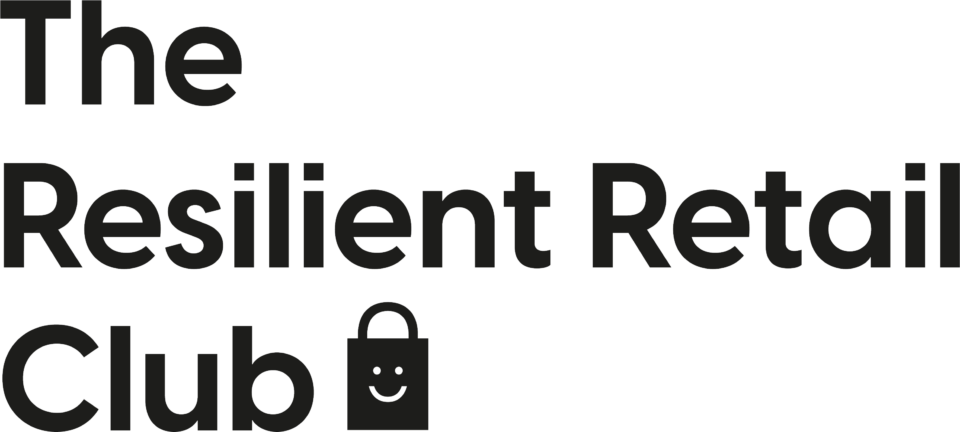Driving traffic to your website
As a creative product business, the first step to making a sale is driving traffic to your website – but it’s important to recognize that not all traffic is created equal – just like in a physical store, you’ll have people who have arrived at your business with the intention to buy but there’ll also be plenty of people just browsing. So how do you ensure that your website doesn’t become a leaky bucket of looky-loos that aren’t converting to customers?
In Episode 19 of The Resilient Retail Game Plan, I want to give you what I like to call my ‘Basic Hygiene’ regime for creative product businesses. Covering Search Engine Optimisation (SEO) and the power of Email Marketing, we’ll take a look at the importance of implementing searchable keywords and discuss how your previous customers are your most likely source of future purchases. From content marketing in the form of blogs and podcasts to building brand awareness through collaborations and well-strategized PR, we’ll also look at how diversifying your use of audience engagement tools is essential to attracting the right customers and showcasing your products.
No time to listen? Read the episode in this blog post below!
You’ve had a brilliant idea. After many months of hard work, you have brought that idea to life and opened your online store. And now what? No-one is visiting.
Does this sound familiar to you? If you are a retail entrepreneur, you may well find that driving more traffic to your online store is one of your most difficult tasks. Setting up a retail business requires mastering so many new skills, and learning how to get traffic to your website is another one that you need to get to grips with.
From sorting your SEO to fine-tuning your email marketing there are some key areas you can focus on to get you started.
Before I start one thing to keep in mind is not all traffic is equal and you should be aiming for quality visitors over the quantity – it’s the difference between high and low converting traffic. You want to focus your time on activity that attracts high converting visits.

Enjoyed this post? Why not pin it to Pinterest
Make a plan
Before you jump in – write out a plan – consider the areas you want to focus on, it’s a good idea to separate these into short, medium and long term. If you try to tackle this all at once it’ll quickly become overwhelming – driving traffic to your website is a long game.
SEO
The first thing that you need to do, ideally while you are building your website, but if not, then shortly after, is make sure you have done the basics to optimise your website. SEO stands for search engine optimization and in the simplest terms it describes the process that you need to use to have Google (or other search engines) pick up your website.
When done properly, SEO will work for you at all times of the day and night, driving traffic to your website that is actually searching to buy what you are selling.
Investing in SEO can drive free, targeted customers who are ready to buy, which is why it’s my top suggestion for the place to start to grow your traffic.
Email marketing
The traffic that you drive to your website from your email list will be the highest converting traffic that you can get. In fact, studies show around 4% or higher conversion from traffic that you have directed to your website from an email that you send.
The beauty of email lists is you control them – it’s the channel that you control. You have a direct line into your customers inbox and can message them directly whenever you like. These are also customers who have established enough trust in you that they have given you their email address, so nurture that relationship. It is also a valuable asset that protects you if Amazon, or Instagram or Facebook decides to freeze your account one day without warning.
Your initial focus should be getting sign ups and the simplest method for a product based retailer is to offer an introductory discount to email subscribers.
It is important to always be actively growing your email list, as they will naturally shrink by around 22% a year as people unsubscribe or change their email lists. Start your list now, and nurture it over time, and you will have your own channel straight to your dedicated followers. What’s not to love?
Content Marketing
In a nutshell, content marketing involves creating unique content that your audience will enjoy.
For example, writing a blog post about your product that will entertain and interest your audience is content marketing. Other examples might be how-to videos, infographics or e-books.
Having a strategy in place to create interesting and original content on your own website will not only encourage people to visit from social media, but it can also be another piece of your SEO strategy.
Social Media Marketing
Ah, social media! As small business owners, we are all heavily reliant on using social media to get our brand out there. It’s a fantastic way to grow our brand, communicate with our customers and attract new ones.
Just be aware, that although this is such an area of focus for so many businesses, traffic that you drive to your website from a social media platform typically converts at a much lower rate than other types of traffic. (You may find my podcast episode 9 – Selling On Social Media – useful when thinking about this area of running a product business).
Collaboration
Collaborating is one of my favourite ways to grow a business, because it strengthens your network, gives you immediate access to a whole new audience, and can be a lot of fun!
Create giveaways or promotions that you can both share with your audiences. Feature on each other’s newsletters.
Social media is a great way to find suitable partners – be open, friendly and upfront about what you are trying to achieve. Most people will respond well to that kind of approach, especially if they are of a similar size to you. There is strength in numbers!
PR
PR refers to getting your products into magazines and newspapers. Press coverage can have a major impact on brand awareness which over time can significantly increase your sales. It does require a lot of time and effort. You need to research your customer to understand what they read, and therefore which publications would be best.
PR works best when you have a really clear brand story, as well as a unique angle on your product. Make sure that you are really clear about your USP (unique selling proposition) before you start a PR campaign.
Find out more
If you enjoyed this post, why not get my Driving Traffic to your website?
It’s a e-book designed to give you more detail about website traffic tactics.
Getting your hands on the Driving Traffic to your website is easy, and you’ll get so much more too!
It’s all part of my “Grow Your Business” FREE toolkit – a collection of resources designed to help you take your business to the next level. The toolkit contains:
Workshop replay – Grow Your Online Sales – my guide to how you can sell more online
E-book – Driving traffic to your website – a rundown of all the ways you can push your sales
Workshop replay – The Launch Lowdown with Elizabeth Stiles
Introduction to wholesale – my mini-course with Therese Oertenblad
Ready to get the toolkit? Just put your email below to receive the link.
For more information about all three of my toolkits, click here.







